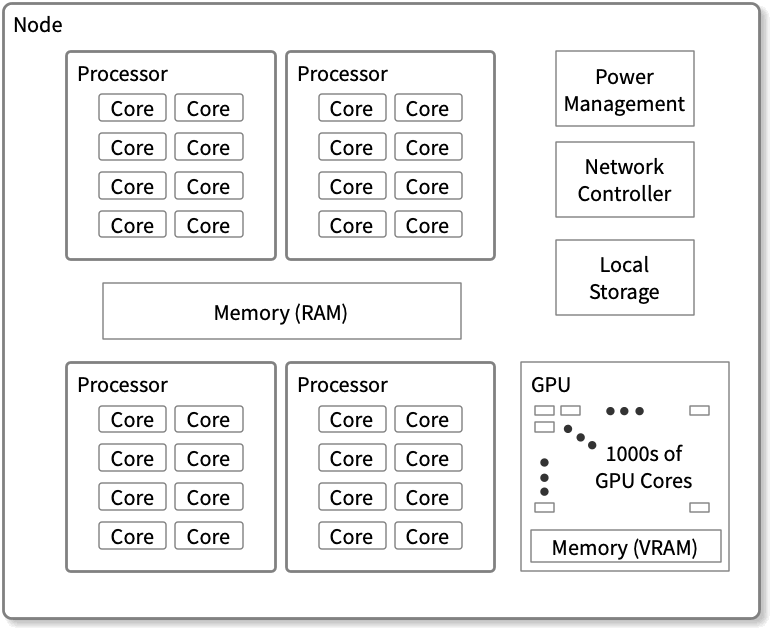Nodes
A node is a standalone physical computer unit with a network connection that typically runs its own copy of the operating system. Thus, a workstation in your office or your laptop computer is a node. Supercomputer clusters are composed of nodes connected by a communications network. Just as there is a major difference in packaging between a workstation and a laptop, the nodes in a cluster like Frontera are packaged into small units that can be mounted in a dense configuration that provides appropriate power, cooling, and network connections.
Modern nodes often contain several processor chips that share access to local memory and storage. Furthermore, modern processor chips contain multiple processing elements called cores. Each core is capable of running an independent thread of execution, so each core on the processor chip can simultaneously process a separate stream of instructions.
Thus, at any instant, a node can be actively processing as many streams of instruction as it has cores. The number of cores in a node is the sum of the number of cores on each of the node's processor chips. Parallel programming allows a program to use more than one core at a time. Depending on how the program is designed, it might run on multiple cores within the same node or run on multiple cores across multiple nodes.


CVW material development is supported by NSF OAC awards 1854828, 2321040, 2323116 (UT Austin) and 2005506 (Indiana University)